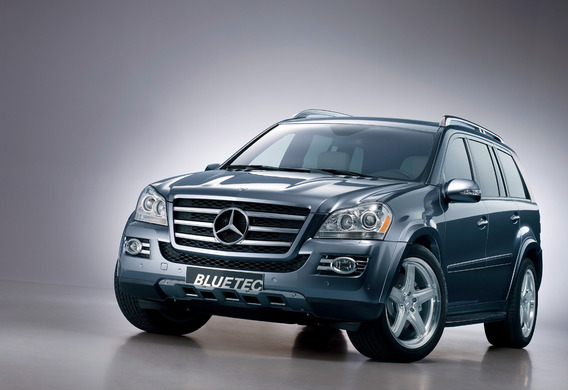
The high pressure injection system for the "Common-Rail" diesel engines has gained significant popularity today. This technology can increase the efficiency of diesel engine operation by allowing greater flexibility in the fuel flow to the engine when the engine load and the more complete fuel combustion are changed. The advent of this innovative injection system has led to the invention of new technologies to reduce the amount of harmful substances released into the atmosphere together with diesel exhaust, particularly soot, which is an essential component of diesel engine exhaust stream. Common Rail as a basis for using BlueTec and similar technologies
Common Rail as a basis for using BlueTec and similar technologies
In the traditional diesel injection system, each high pressure pump section has to fuel the fuel in a separate fuel-fuel line. Even though the thickness of the fuel lines is slightly different when they are pressurized in 1500-2000 atmosphere, they are slightly but "inflated". As a result, the portion of the fuel falling into the cylinder is different from the calculated fuel. The extra fuel, the burning, increases the fuel consumption, increases the opacity and reduces the complete combustion of the fuel-air mixture.
In 2009, Audi A3 TDI clean diesel, equipped with similar Blue TEC, received the [ [ Green Car of the Year Award]]
A good engineering solution to this problem was developed simultaneously by several automakers. In the new system, the high pressure fuel pump is pumping fuel into the common fuel rail, which, among other things, plays the role of a resiver, that is, a pressure stabilizer in the path. The ramp continuously has a constant amount of fuel that is not under pressure, but under constant pressure. In addition, the development of intelligent technologies has enabled electronic opening systems (in traditional diesels, injection cycles have been hydromechanical as a way to increase pressure in the pipeline). The electronic unit, which controls the performance of the nozzles, shall take into account information on the position of the accelerator pedal, pressure in the ramp, engine temperature, load on the engine, etc. On the basis of this data the fuel portion of the fuel shall be calculated and fed.
In California, you can buy a diesel car only if it is built on Blue TEC technology. Other diesel engines do not meet the requirements for the level of harmful substances
Another novelty introduced by the development of automotive electronics is two-stage fuel feed into the combustion chamber. First, we're looking for a "split" (about a milligram). When combustion is added to the effect of compression increases the temperature in the chamber, and the main dose injected with the trace burns more smoothly, also increasing the pressure in the cylinder. As a result, the engine works softer and less noisily, while the fuel consumption is reduced by about 20% while torque is increased by 25%. What is important is reducing the soot in the exhaust.
BlueTec action and similar systems
Among the new developments designed to improve the environmental performance of diesel engines at the same time with optimization of their economy the BlueTech system, developed by the specialists of Daimler AG, is considered the most promising. The main part of it is an innovative procedure for the catalytic reduction of exhaust gas.
Catalytic converters of modern vehicles work at the expense of ceramic or metallic "honeycomb", covered with a layer of reactive substances-catalysts. Catalyst oxidizes or restore toxic compounds of CO, CH and NOx to carbon dioxide, simple nitrogen and water.
However, the peculiarities of diesel fuel, as well as the processes of formation and combustion of the fuel-air mixture in diesel oil are such that the exhaust contains not only harmful chemical components, but a large amount of soot. And if you start to reduce the share of soot, the content of NOx increases, and vice versa. Thus, for the complex treatment of diesel exhas, a multicomponent chemist is needed, a mechanical system that complicates the construction of a car and, as a consequence, reduces the profitability of production.
BlueTec technology is built on a combination of traditional and new solutions. The exhaust gas will be started by a particulate filter and catalyst "killing" carbon compounds in most diesel vehicles. Then, the exhaust injection is sprayed with an active reagent AdVlue based on urea (ammonia solution in water). The resulting mixture is placed in a special election catalyst (SCR), where ammonia from AdBlue under the influence of catalysis at 250-300 ° C is effective in the chemical reaction of nitrogen oxides by "taking" them to nitrogen and water. The rest of the harmful components are being burned here.
BlueTec Plus and Minus
With obvious pros, BlueTec has no less obvious disadvantages. The Store of an AdLog component requires a separate capacity. The system itself is complicated by the presence of additional hubs and highways. In addition, the system is even more lusty to fuel quality and can only operate on diesel with minimal sulphur content. Another very topical issue for Russia-the solution AdVlue is frozen at minus 11.5 degrees.
The VW Passat TDI equipped with an SCR system has set a non-stop-trip record on one full fuel tank in 2012. The record of 1626 miles is still on the bat
Therefore, BlueTec engineers are now actively working on improving systems without using urea. Today, a combination of a particulate filter, a platinum catalytic converter and two SCR-s "charged" exclusively on the control of nitrogen oxides are being tested and refined. The system currently allows NOx to be used in diesel exhaust at approximately Euro 5.







